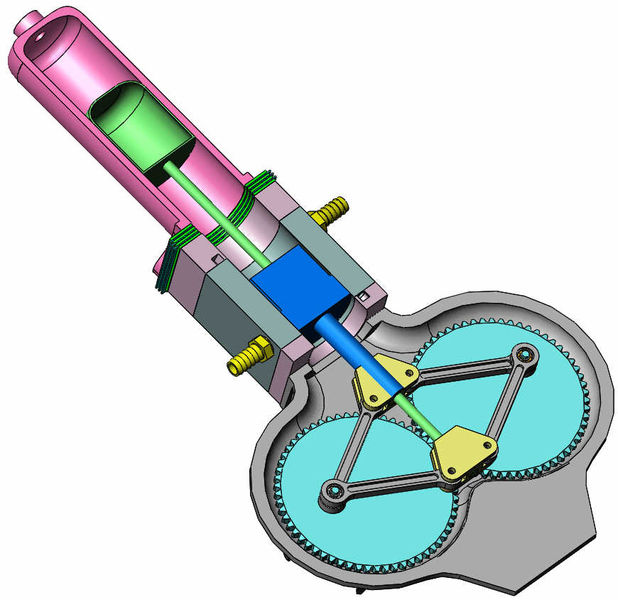Prof Marc Bekoff, an ecologist at University of Colorado, Boulder, believes that morals are "hard-wired" into the brains of all mammals and provide the "social glue" that allow often aggressive and competitive animals to live together in groups.
He has compiled evidence from around the world that shows how different species of animals appear to have an innate sense of fairness, display empathy and help other animals that are in distress.

Before humans invented religion, they experimented with a wide range of ethical systems. Based upon a dizzying mix of inner instincts and perceived influences from the outer world, each generation taught the next one how they should live and treat other people (the members of the extended family who alone were considered to be human) and live in the natural world.
Religions evolved for many reasons, one of which was to assist in the development of an inner morality and system of ethics within each group member. Another purpose of religion has been to provide a sense of "awe and transcendence", the idea of something greater than oneself which can assist one in overcoming personal obstacles.
Religions have become so instrumental in these roles, that even in the modern age of science it has proven difficult to dispense with them.
Religion is often a considerable obstacle to over-ambitious governments. The CCP in China persecutes its Falun Gong and Tibetan religionists because these believers hold to a transcendant view of life that goes beyond secular authority. Religious believers are also likely to have a good recall of the many misdeeds of the secular government --
which is something Chinese leaders wish to stamp out.
The totalitarian state seeks to integrate the uses of religion within the state itself.
Hitler's Nazi totalitarianism rested upon the cult of personality. Kim's North Korean totalitarianism does the same, as did Fidel Castro's total state. Hugo Chavez and the other baby dictators of South and Central America would like to achieve the same ends. Such personality cults are actually "pocket religions" in their own "rite." Something similar might occur again in the west -- perhaps even in the US? Imagine an Ameircan "Big Brother" and Ministry of Truth kept constantly busy obscuring reality and modifying history. The only morality is the morality of the state. Can you picture it?
In the Muslim world, Islamists want to integrate the secular and the religious into a totalitarian unity. Such a unity could not tolerate competitors in the intellectual, spiritual, political, or economic / military worlds. Religion becomes the death of morality under such a regime. Any threats to the totality would be eliminated.
The majority of the world, in terms of population, is set to devolve into a broadly anarchic "warlordism" and gangsterism such as one sees across Africa and parts of Central Asia (and the inner cities of the western world). The dominant ethics under such gangster systems derives from the power to deprive members of health, sustenance, and life. Insiders prosper, outsiders are punished or are eliminated, and the masses simply endure.
A system of life that would allow
Matthew Crawford to get a PhD in political science, work in a think tank for a few months, then quit the intellectual life in order to work as an amateur philosopher and full-time motorcycle mechanic -- is a system of many luxuries.
It's satisfying to complete a task from start to finish. Start a small business, or learn a trade—really! Do you know how much plumbers make? It also helps to imbue what you do with a sense of craftsmanship. Strive not for flimsy new economy "flexibility" but for real, handy expertise in a chosen field. The point is to achieve mastery, which in turn gives you a skill not subject to the whims of office politics.
How many societies can afford to educate persons at the PhD level, only to see them leap into the blue collar world voluntarily? Of course, Crawford's journey has not ended. In fact, from the blue collar world, he has leapt into the intellectual world of authors, with the publication of
Shop Class as Soulcraft: An Inquiry Into the Value of Work.
Systems of ethics depend entirely upon the degree of luxury a society extends to its members. Richer, more liberal societies can afford a much more intricate -- even counter-productive -- system of ethics, than can the brute force gangster existences of a growing portion of the world's populations in both the third world and the developed world (ethnic ghettoes of the central city and banlieus).
Morality preceded religion, and goes far deeper than religion. If humans in the developed world cannot develop a workable system of morality and ethics that persons of all religions can adhere to, they are in for violent clashes in the not so distant future.
In the United States, leftists have gained power in a quasi-stealthy manner reminiscent of how Hitler's Nazis gained power in Germany. With the early actions of the leftist reich, including the first Supreme Court nominee -- a left-radical extremist --, it is clear that the regime in power intends to enforce a leftist ethics upon the population at the point of a gun, via the force of law. It is an ambitious and revolutionary attempt to overhaul a system that has worked exceptionally well over a period of centuries.
Forced revolutions are either based on violence or lead to violence. Ethics and morality run too deeply within the human soul to be wrenched about by social engineers and crusaders. This interlude will end badly for everyone who has jumped upon the crusader bandwagon. And there will be a great deal of collateral damage.
A much wiser approach would be to work in the manner of the US Constitutional Congress to achieve a broadly applicable secular morality upon which a wise and acceptable system of law could be structured and extended.
The brute force, stealth revolutionary approach taken by Brock O'Bomba and his crew will run into objections of morality. Not only from established religions and churches. But from the deeper morality of the inner self.
Brock's only chance is for the economic situation to become so dire, and to bring so many people into dependency upon government benefits, salaries, and subsidies, that the US will fall essentially into the quasi-welfare state category -- with elements of dictatorship "insider chic", kowtowing to the gangsta leada.
In dire circumstances, most people will sell their ethical reservations for a pittance. Obama zombies have already sold their pittances to Brock O'Bomba. So have many public sector workers, academics, and journalists. But for Brock to succeed in the long run, the economic devastation would have to grow far more severe than it is likely to become before the next few elections.
Labels: ethics, moral mind, Pram


























